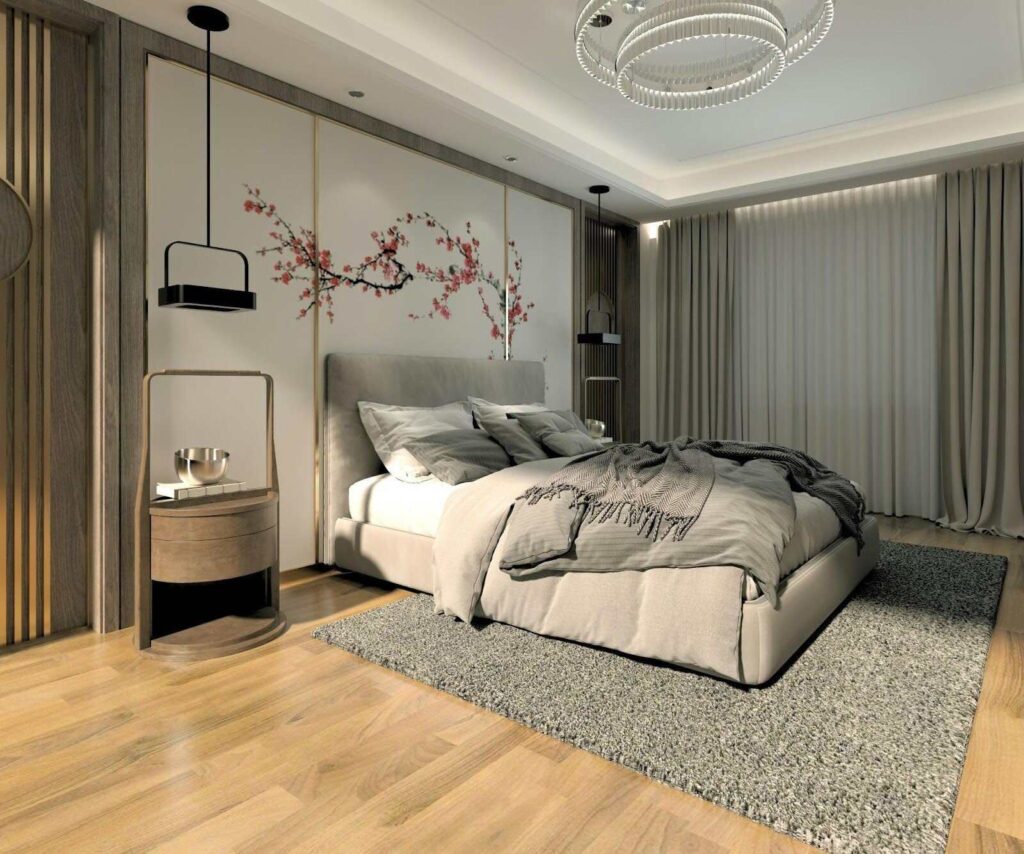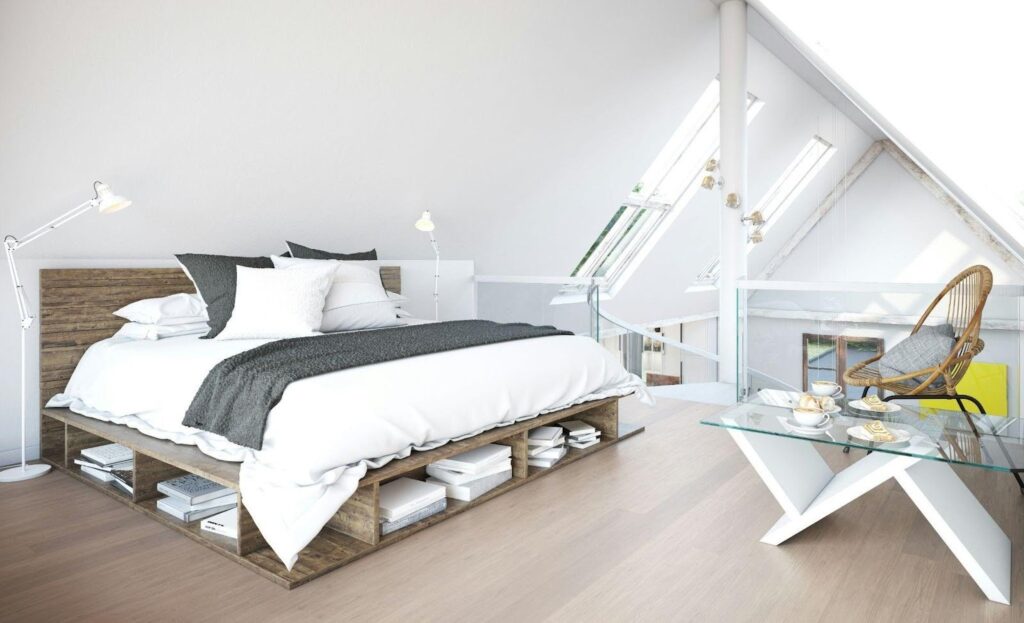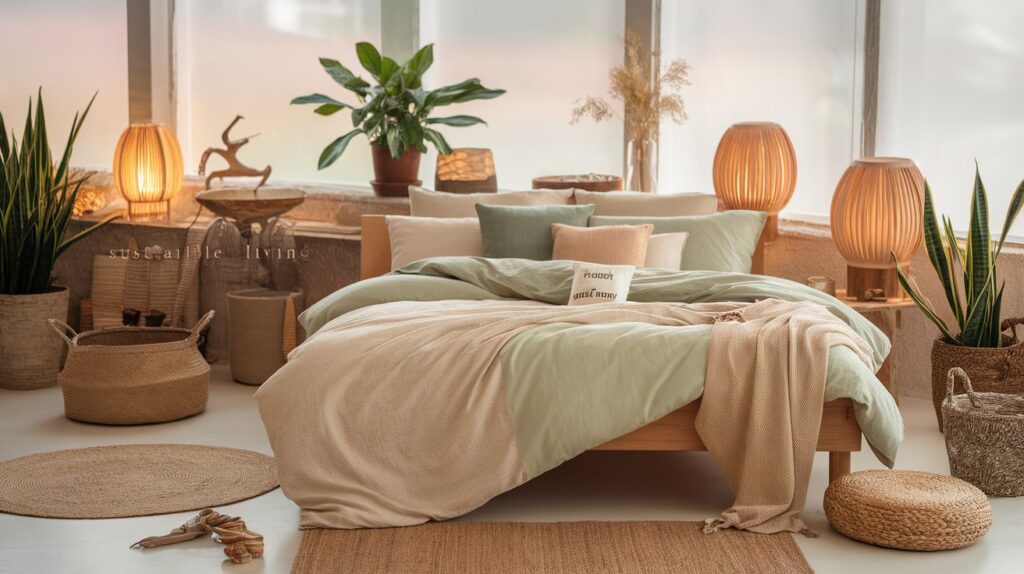There’s nothing quite as rejuvenating as a good night’s sleep. But if your bedroom feels chaotic, stuffy, or uncomfortable, rest can become elusive. Many people struggle with night sweats, uneven temperatures, or synthetic materials that make sleeping downright unpleasant-which is why choosing the right bedding becomes essential.
At the intersection of wellness and design lies a growing movement toward sustainable, cozy bedroom environments. You don’t have to sacrifice style to make eco-conscious choices, and you don’t have to give up comfort to embrace minimalist, low-impact living. This article dives into actionable tips for styling your bedroom to promote both comfort and sustainability.
1. Start With Breathable, Natural Textiles
Comfort starts where you lie down-literally. Your sheets, duvet covers, and pillowcases are in direct contact with your skin for hours each night, so it’s critical to choose materials that promote airflow and temperature regulation.
Opt for:
- Organic cotton: A classic choice, it’s soft, durable, and free from harmful pesticides.
- Linen: Naturally cooling and ultra-breathable, linen gets softer with every wash.
- Bamboo or Tencel (Lyocell): These plant-based fabrics are excellent for wicking moisture and feel silky-smooth against the skin.
In addition to physical comfort, natural textiles are often biodegradable, require less water to produce, and support sustainable farming practices.
According to the U.S. Environmental Protection Agency, over 11 million tons of textile waste end up in landfills every year. By choosing natural, long-lasting fabrics, you’re reducing your contribution to that waste.
2. Layer With Intention
A thoughtfully layered bed doesn’t just look inviting-it helps regulate body temperature across seasons.
Try this approach:
- Base layer: Use a fitted sheet and flat sheet made of breathable material.
- Middle layer: A light quilt or blanket adds warmth without weight.
- Top layer: Use a heavier duvet in colder months, or a lightweight coverlet in summer.
By mixing and matching layers, you can adjust based on weather, body temperature, and even design aesthetics. For sustainability, look for blankets and comforters filled with recycled down or organic cotton instead of synthetic polyester.
3. Choose a Non-Toxic Mattress and Pillows
What’s under your bedding matters just as much. Many conventional mattresses contain flame retardants, VOCs (volatile organic compounds), and other harmful chemicals that off-gas over time.
Look for certifications such as:
- GOTS (Global Organic Textile Standard) for organic textiles
- Greenguard Gold for low chemical emissions
- OEKO-TEX Standard 100 for tested textiles free of harmful substances
These indicators ensure your sleep environment supports respiratory health and overall wellness, especially for people with sensitivities or allergies.
4. Go Minimal, But Meaningful With Decor
Sustainable styling doesn’t mean stark or boring-it’s about making intentional, mindful choices that reflect your values.
Decor ideas that promote comfort and sustainability:
- Upcycled nightstands or headboards from reclaimed wood
- Vintage rugs that add texture without new production waste
- Ceramic or glass lamps instead of plastic-based ones
- Locally made wall art that supports small-scale artisans
Minimalist design encourages fewer distractions and more tranquility, which research shows can improve sleep quality and mental clarity.
5. Incorporate Eco-Friendly Paint and Flooring

If you’re doing a more extensive bedroom makeover, don’t overlook walls and floors.
For walls:Use low-VOC or zero-VOC paint to minimize off-gassing and improve indoor air quality. Brands like Benjamin Moore’s Natura or Clare Paint are great options.
For flooring:Hardwood from sustainably managed forests, cork, or bamboo are excellent choices. If you love rugs, opt for wool or jute over synthetic fibers.
6. Improve Air Quality with Plants and Ventilation
Fresh air is underrated when it comes to both sustainability and comfort. Bedrooms should be well-ventilated, either through windows, ceiling fans, or air purifiers.
Bonus: Indoor plants like snake plant, peace lily, and aloe vera not only add visual interest but also help purify the air.
Just be sure to choose plants that are safe for pets and easy to care for-this ensures your green design stays green in more ways than one.
7. Smart Lighting for Sustainable Mood
Lighting sets the tone in your bedroom. Instead of harsh overhead bulbs, opt for layered lighting using dimmable lamps or sconces. Choose LED bulbs, which last longer and consume up to 75% less energy.
Consider using smart light systems that let you set schedules-reducing wasted energy when you’re not in the room. Soft, warm tones (2700K or lower) help cue your body for rest as the sun sets.
8. Embrace Multi-Functional Furniture

If you’re dealing with limited space, multifunctional furniture helps reduce the need to buy multiple pieces, ultimately saving resources.
Great options include:
- A bed with built-in storage drawers
- Foldable desks that double as nightstands
- Benches with under-seat storage
The key is buying less, but better. Look for quality craftsmanship that will last for years, and avoid the fast-furniture trap where pieces fall apart after a season or two.
9. Consider Window Treatments for Thermal Efficiency
Curtains or shades aren’t just decorative-they can help control your room’s temperature.
Sustainable window covering ideas:
- Thermal blackout curtains made from organic cotton or hemp
- Wooden blinds from FSC-certified sources
- Sheer linen drapes that soften natural light while maintaining privacy
Reducing reliance on heating and air conditioning not only shrinks your carbon footprint, but also creates a cozier, more grounded sleeping environment.
10. Declutter with Purpose
Clutter isn’t just a visual nuisance-it affects your mental state and can make even a well-designed room feel chaotic.
Steps to take:
- Do a seasonal purge: donate or recycle what you don’t use.
- Invest in attractive storage bins made of rattan, canvas, or recycled plastic.
- Store off-season items under the bed or in labeled bins.
Tidying up doesn’t mean stripping your space of personality. Keep sentimental or joyful items visible-just not overwhelming.
Create a Bedroom That Reflects Values and Brings You Peace
Sustainability and comfort are not at odds-they enhance each other when done thoughtfully. By prioritizing breathable materials, mindful decor, and low-impact choices, you create a bedroom that not only looks beautiful but supports your wellbeing and the planet.
You don’t need a full renovation to make your bedroom more sustainable. Even small changes-like swapping your sheets, adding plants, or switching to LED bulbs-can have a big impact on how restful and rejuvenating your space feels.
In the end, your bedroom should reflect what you value most: comfort, serenity, and a commitment to better living.

